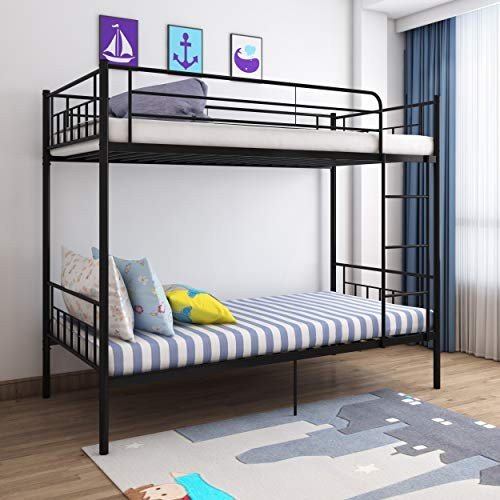With the rise of vertical living and smaller areas, the popularity of bunk beds has soared amongst households. Bunk beds not just provide a practical sleeping option, especially in shared spaces, but they likewise bring an element of fun into a child's life. This comprehensive guide digs into the features, advantages, and factors to consider of kids' bunk beds, making it simpler for parents to choose the right bed for their children.
Bunk beds are flexible pieces of furnishings that serve more than a single purpose. Here are some crucial features to think about:
| Feature | Description |
|---|---|
| Product | Bunk beds can be built from wood, metal, or a combination of both, using differing levels of resilience and design choices. |
| Safety Features | Most bunk beds come equipped with guardrails, safe and secure ladders, and capped supports for safety, specifically essential for children. |
| Design Variety | Options vary from classic styles to modern-day designs, guaranteeing a match for any room décor. |
| Space-Efficiency | Bunk beds utilize vertical space, making them ideal for smaller rooms. |
| Convertible Options | Some models can be converted into 2 separate beds, offering flexibility as children grow. |
| Storage Solutions | Some bunk beds feature integrated storage drawers or shelves, assisting to keep the space organized. |
Purchasing a bunk bed comes with several advantages:
When choosing the ideal bunk bed for a child, moms and dads ought to take into consideration various factors:
Bunk beds are available in various styles and setups to fit various requirements:
| Type | Description |
|---|---|
| Standard Bunk Bed | A classic design with one bed stacked on top of another, usually utilizing a ladder to access the leading bunk. |
| L-Shaped Bunk Bed | Features 2 bunk beds linked in an L-shape, typically more spacious and appropriate for kids sharing a space however needing a bit more space. |
| Triple Bunk Bed | Makes up 3 stacked beds, perfect for taking full advantage of sleeping arrangements in really restricted areas. |
| Loft Bed | A raised bed with space underneath that can work as a backyard, research study corner, or extra storage. |
| Futon Bunk Bed | Combines a bunk bed on the top with a futon or couch underneath, making it great for pajama parties and making the most of space usage. |
| Convertible Bunk Bed | Can be separated into two private beds, providing flexibility as children's requirements alter. |
Preserving bunk beds is vital for making sure longevity and safety. Here are some easy care practices:
Q1: At what age can a kid safely use a bunk bed?
A1: Generally, Kids Bunk Beds aged six and older are considered safe to use the upper bunk due to the height and stability aspects involved.
Q2: Can I position a bunk bed near a window?
A2: It is a good idea to prevent placing a bunk bed near windows to lower the threat of falling or injuries.
Q3: Are bunk beds safe for more youthful kids?
A3: While some contemporary bunk beds come with safety features accommodating more youthful kids, it is typically recommended to wait until they are older, generally over 6 years.

Q4: What is the common weight limit for leading bunks?
A4: Weight limits vary by model however usually range from 150 to 250 pounds. Constantly refer to the manufacturer's specs.
Q5: How typically should I inspect the bunk bed's safety functions?
A5: It is advisable to perform a safety check every couple of months or whenever you discover any indications of wear.
Kids' bunk beds function as a tactical solution for households wanting to take full advantage of space while offering an enjoyable and appealing sleeping environment for their children. With a variety of choices offered-- from basic designs to loft beds-- moms and dads have the freedom to choose something that fulfills their family's specific needs. By thinking about essential factors such as safety, space viability, and their children's choices, moms and dads can make an informed choice, guaranteeing that each kid is excited about bedtime while gaining from a well-organized room.
No Data Found!
